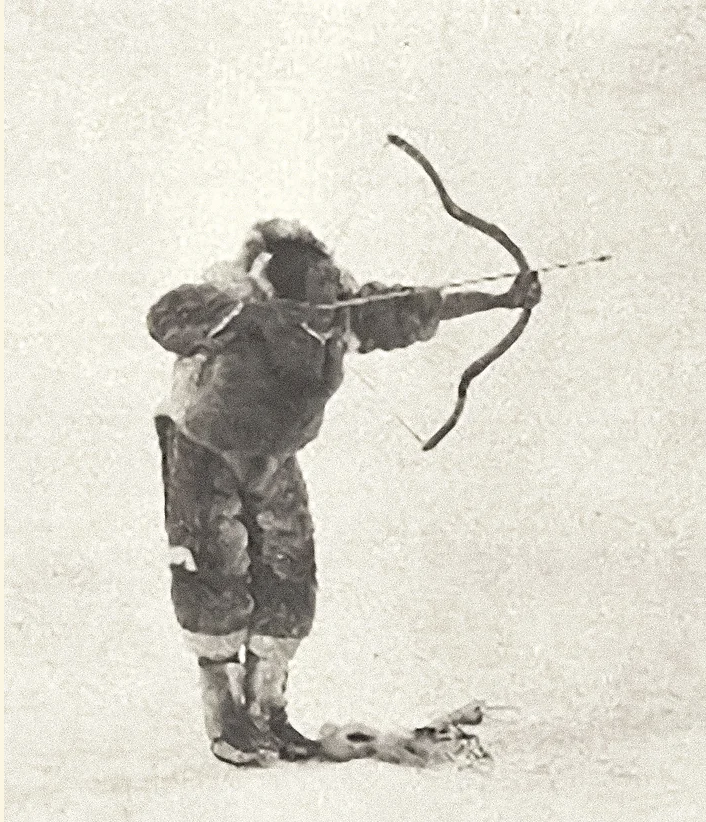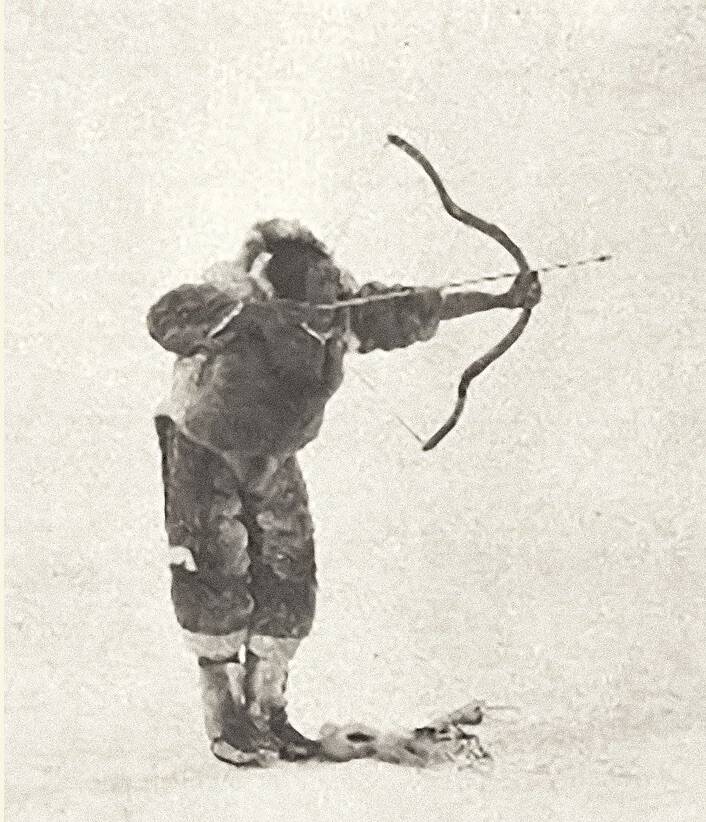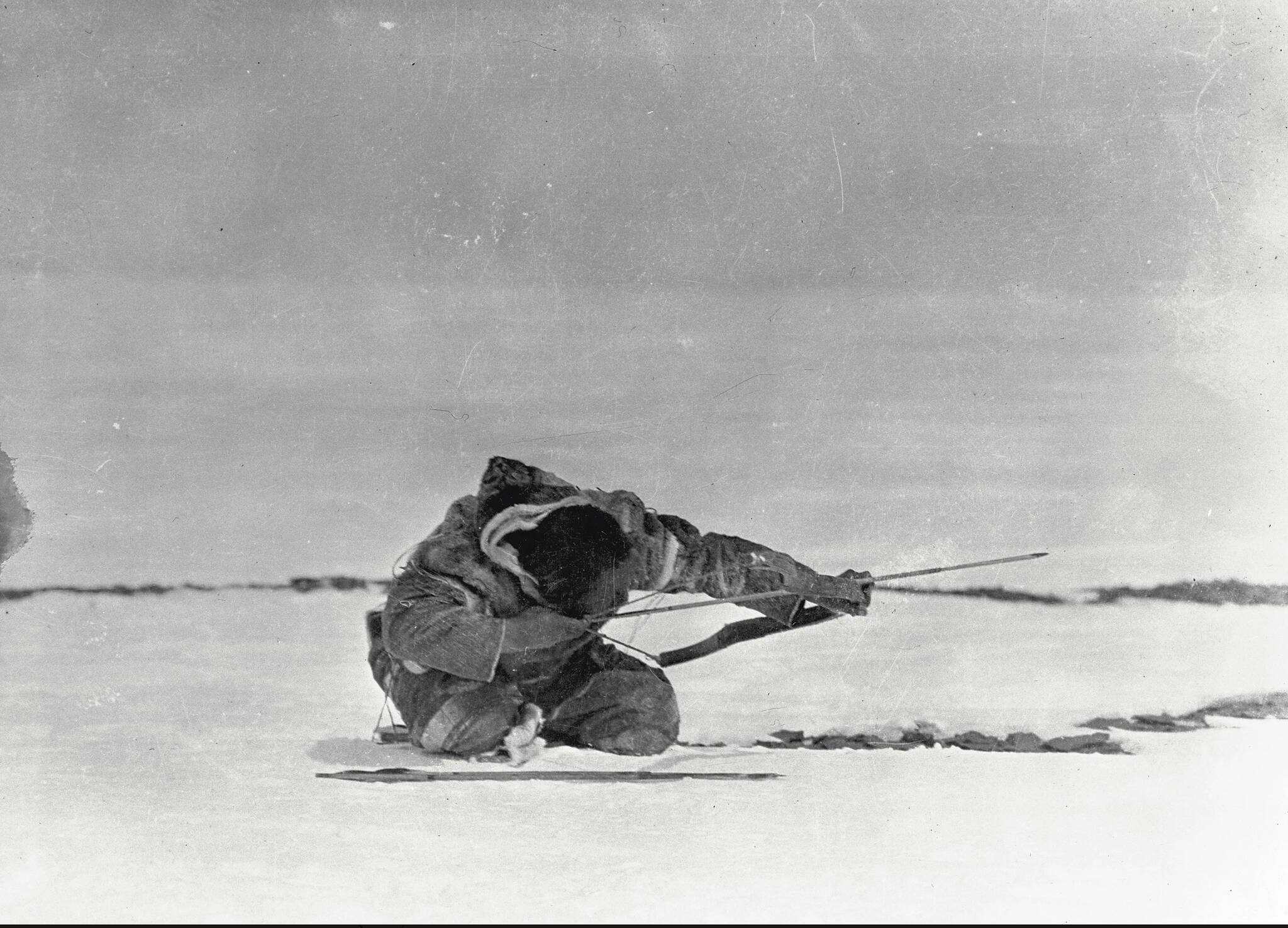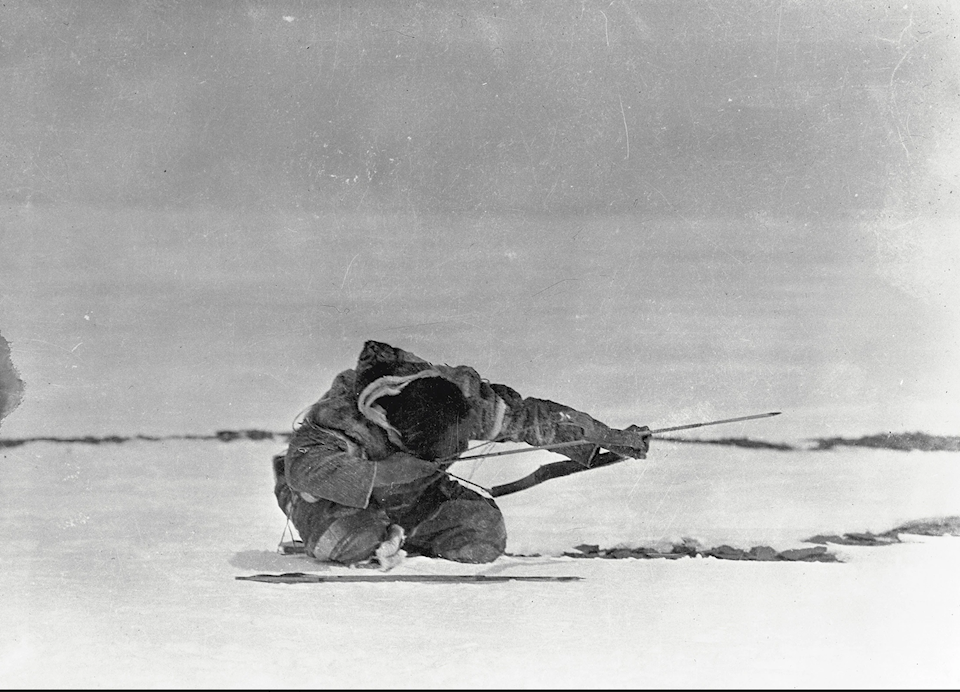By the time Mabel Etegik was born in 1943, the Inuinnait people’s traditional ihualik bow and arrow had all but vanished. She never saw one intact, and certainly never saw one being used.
Yet she recalls glimpsing vestiges of the forgotten hunting tool in her childhood.
“When I was young, my father already owned a gun, so I didn’t really see the bow and arrow,” said Etegik, who serves as a board member and Elder in residence with the Kitikmeot Heritage Society (KHS) in Cambridge Bay. “But I do remember the braided sinew that they used to make the bows.”
“I remember my younger brother had a play bow and arrow made out of caribou rib,” she added.
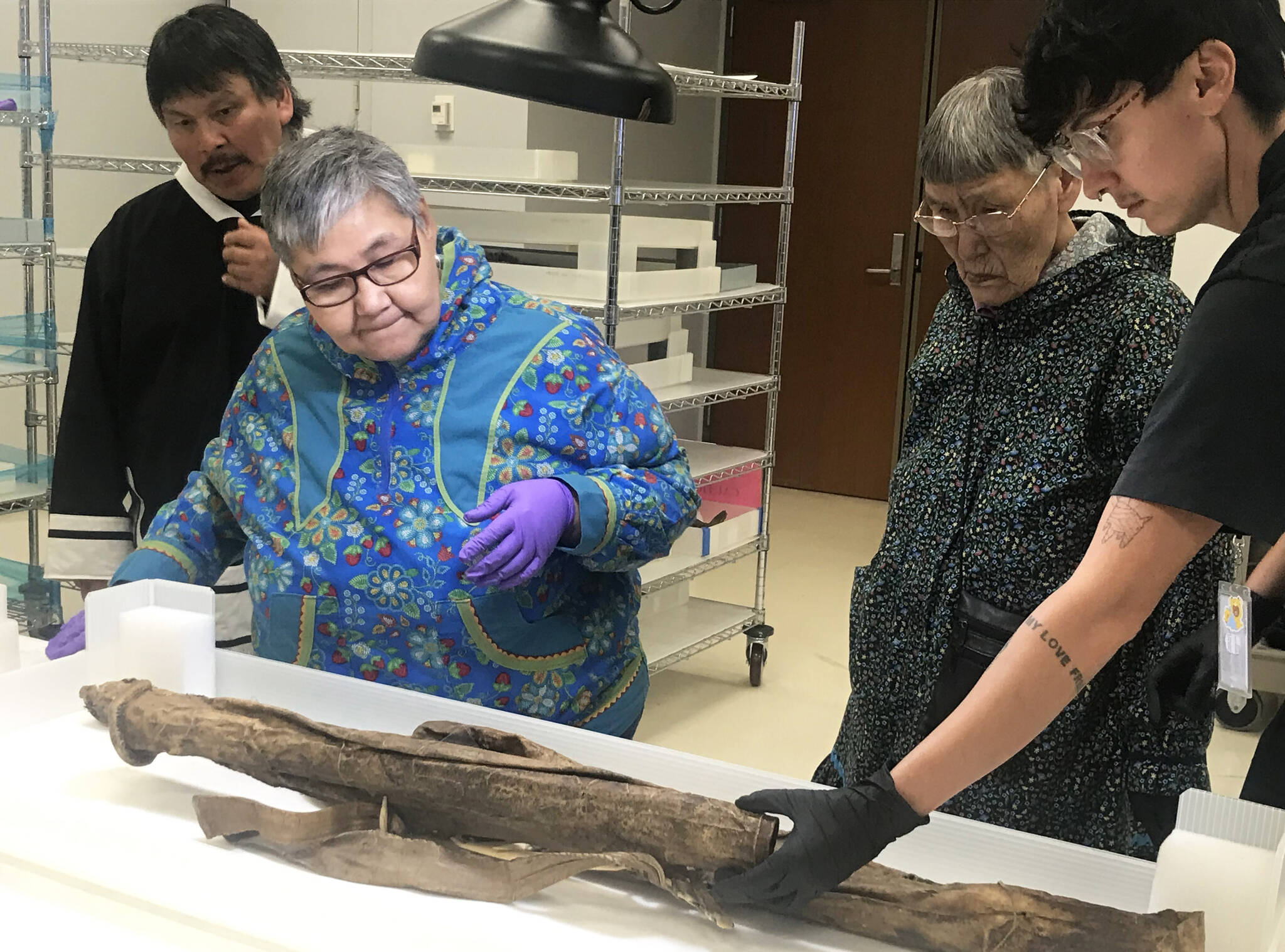
The ihualik is one of several bows used by the Inuinnait, an Inuit group living in the Central Canadian Arctic, including the Kitikmeot Region of Nunavut. Unlike the bows made below the tree line, where long pieces of wood are readily available, the ihualik was constructed using three smaller pieces of wood, caribou antler, or muskox horn, and held together by caribou blood and braided sinew.
Anthropological records suggest it was accurate, even from significant distances, but it could not contend with the rifle, and by the early 1900s, it was already disappearing.
It may not be gone for good.
Etegik, along with four other members of the KHS, recently made the long flight south to Washington, D.C., where they visited the The Smithsonian Institution and the National Museum of the American Indian and, along with staff at the two facilities, began to unearth the mysteries of the ihualik with the ultimate goal of recreating one.
“We’re losing all of our Elders – the most experienced people,” said KHS Men’s Program Coordinator Charlie Ikkutisluk, who was also on the week-long trip. “I’m very happy that I went down there to Washington to see the bows and arrows.”
The KHS team was joined by France’s Coline Lemaitre, a PhD Candidate at University Paris 1 Panthéon-Sorbonne. Lemaitre has spent years studying the bows and arrows of West Alaska, and months working with the Smithsonian, so she had plenty of wisdom to share.
That she is also an experienced archer made her all the more valuable as the group sought to understand the workings of the ihualik.
“It’s very unique and it’s very specific,” said Lemaitre. “These bows and arrows were probably one of the most unique bow and arrow technologies in the world.”
“It hasn’t been made for a very, very long time.”
The hope among the Smithsonian team, according to Lemaitre, was that their visitors from Cambridge Bay would “remember or have ideas of how to make this bow.”
It was a fruitful effort.
Together, the group examined dozens of artifacts, many of which related to the ihualik, and by the time the trip concluded, had a much better understanding of its workings.
Lemaitre is now hard at work learning how to build the bow. For the moment, her efforts are mostly digital, as she uses a complex software called VirtualBow to test the design of the tool.
“I don’t have a lot of experience making bows,” she said. “My experience is more with shooting. I know the feeling of shooting with different types of bows, and I know a lot about the mechanics.”
“Because the type of bow I’m studying is very specific, this software isn’t perfect for that, so I’m also trying to figure out how I can use other technologies and 3D modelling and other simulations. I’m using all of that to try to understand how these bows could work.”
The group’s efforts to bring back the ihualik are rooted in a desire to protect Inuinnait tradition.
According to Etegik, it’s also about protecting the language associated with the bow, much of which is not used in other contexts and has therefore disappeared along with the tool itself.
“It’s very important to keep the language,” she said. “A lot of these old words [associated] with these traditional tools, you don’t hear them much anymore.”
“It’s very important to bring it back so we can keep our culture alive.”
If the KHS, Lemaitre and the Smithsonian are able to successfully recreate an ihualik bow, it remains to be seen who will be the first to use it.
It is said to require both strength and technique to fire, so an experienced archer like Lemaitre might make the most sense in the early going. Yet the hope is that ihualik bows will eventually end up back in the hands of the Inuinnait in Cambridge Bay and beyond.
Ikkutisluk says he would like to fire one, while Etegik can envision the ihualik in the hands of her grandson.
“One day I hope to see that happen,” she said. “I want to help keep the traditions alive, especially for my grandson.”
